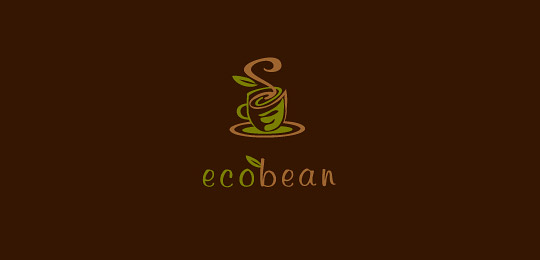Flavor description of Yunnan Tieka boutique coffee beans introduction to the taste of varieties and producing areas
Flavor description of Yunnan Tieka boutique coffee beans introduction to the taste of varieties and producing areas
Of course, if it is used to make instant coffee or general commercial beans, high-yield catimor is a good choice, but if you want to look for Yunnan specialty coffee, then the old variety of iron pickup has become the first choice because of its congenital excellent genes. Therefore, this trip to Yunnan also followed the trail of the old varieties. But the reality is really cruel. Before going, Brother Zou told me that there was an old variety in his relative's house, but what he saw excitedly was a wild growing coffee forest, which belonged to his aunt. Because his aunt was too old and did not have the strength to replant and renovate-- these old varieties survived, but the aunt was unable to manage it alone, so the tree was allowed to grow naturally. Pick some fruit when it is ripe, so when Nestl é succeeded in promoting high-yield new varieties in Pu'er in the 1990s, brown farmers in Baoshan also cut down the old varieties and changed them to new ones. With a round of coffee expansion, the new varieties are increasing day by day, and the old varieties are decreasing day by day, finally to today's situation: the old varieties are almost cut down, and the little ones that survive are all "old, weak, sick and disabled". Most of the trees are more than 20 years old, and their yield and quality are much lower than those of the so-called new varieties. Actually, it refers to catimor (Katimo), which is a hybrid of the timor species of the Roberta family and Arabica. Compared with the old varieties, it lacks rich aroma and taste, and has a relatively shallow smell of grass and soil, but its advantages are pest resistance, easy management and high yield. The highest yield per mu can reach 350kg raw beans, which is more than twice that of the old varieties. If you trace its roots, typica originated from Ethiopia, the ancient origin of coffee, and is the earliest original variety of coffee. Bourbon is a variety of typica, both of which have rich aroma and excellent taste performance, and belong to very high quality varieties in Arabica. It is said that the coffee tree species that was first introduced into Zhukula in Yunnan is typica. When coffee was planted on a large scale in Baoshan area in the 1950s, it was also typica and bourbon. But the problem is that although these two varieties are excellent in taste, they are not resistant to diseases and insect pests, are prone to leaf rust, and the yield per mu is relatively low, so corresponding to this, there is a "new variety" to mention Yunnan coffee. Perhaps the most common word we hear is "Yunnan small grain coffee", and most of them will say "Yunnan small grain coffee-fragrant but not bitter, strong but not strong." Therefore, many people classify the varieties of Yunnan coffee as "small seed species", and the evaluation of the taste of Yunnan coffee is naturally "fragrant but not bitter, strong but not strong". Regardless of whether it is correct or not, there is no word "small seed" among the more than 900 named coffee varieties at present, so this "small seed" is not strictly a coffee variety, it is just a nickname given to this variety by the people of Yunnan. In fact, the name of Yunnan "small grain coffee" should be arabica--typica (Arabica-iron pickup) or arabica--bourbon (Arabica-bourbon).
Ironpika is commonly found in Jamaica in Central America and Indonesia in Asia. Its fruit is usually large and oval, while its leaves are slender. Like to grow in fertile mountain soil, cold resistance and disease resistance are weak, the yield is low. The famous Jamaican Blue Mountain Coffee belongs to this variety.

Important Notice :
前街咖啡 FrontStreet Coffee has moved to new addredd:
FrontStreet Coffee Address: 315,Donghua East Road,GuangZhou
Tel:020 38364473
- Prev

How much do you know about coffee stories?
The main ingredient of coffee the fiber of raw beans will be carbonized after baking and combine with caramel to form the hue of coffee. The main source of protein calories, the proportion is not high. Most of the protein in coffee powder will not dissolve out when brewing coffee, so the intake is limited. Sugar coffee raw beans contain about 8% sugar, most of which are converted into caramel after baking.
- Next

The Origin of American Coffee and the description of the proportion and Flavor of brewing Water
The origin of American coffee the proportion of brewing water flavor description taste manor area introduction water: the water you use is very important. If you are using tap water, let the faucet run for a few minutes before filling the coffee pot. Remember to use cold water, not distilled or softened water. Ratio of water to coffee: a common law is that six ounces of boiling water is 1 to 2 tablespoons (tablespoons)
Related
- Beginners will see the "Coffee pull flower" guide!
- What is the difference between ice blog purified milk and ordinary milk coffee?
- Why is the Philippines the largest producer of crops in Liberia?
- For coffee extraction, should the fine powder be retained?
- How does extracted espresso fill pressed powder? How much strength does it take to press the powder?
- How to make jasmine cold extract coffee? Is the jasmine + latte good?
- Will this little toy really make the coffee taste better? How does Lily Drip affect coffee extraction?
- Will the action of slapping the filter cup also affect coffee extraction?
- What's the difference between powder-to-water ratio and powder-to-liquid ratio?
- What is the Ethiopian local species? What does it have to do with Heirloom native species?

